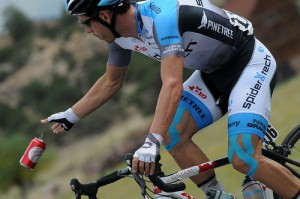This week, find out if kinesio taping is effective, why you should be choosy about your breakfast cereal, the best way to exercise to control blood sugar, why athletes shouldn’t avoid carbs, and see great illustrations of why correlation doesn’t imply causation.
 Does kinesio taping work? You may have seen bright “kinesio” tape on Olympic athletes, professional cyclists, and more recently on recreational athletes. Kinesio taping is a popular treatment that physiotherapists and trainers use to help treat musculoskeletal conditions and various athletic injuries. But is it effective? Researchers set out to answer this question by reviewing the results of 12 randomized trials that compared kinesio taping to other treatments (sham taping-placebo, no treatment, exercises, manual therapy, or conventional physiotherapy). They found that overall, kinesio taping had no significant benefit, and the current evidence doesn’t support its use as a treatment modality. (Journal of Physiotherapy, April 2014).
Does kinesio taping work? You may have seen bright “kinesio” tape on Olympic athletes, professional cyclists, and more recently on recreational athletes. Kinesio taping is a popular treatment that physiotherapists and trainers use to help treat musculoskeletal conditions and various athletic injuries. But is it effective? Researchers set out to answer this question by reviewing the results of 12 randomized trials that compared kinesio taping to other treatments (sham taping-placebo, no treatment, exercises, manual therapy, or conventional physiotherapy). They found that overall, kinesio taping had no significant benefit, and the current evidence doesn’t support its use as a treatment modality. (Journal of Physiotherapy, April 2014).
Breakfast cereals can be sugar bombs. For anyone who’s wandered down the cereal aisle, this is no surprise. A recent analysis for more that 1,500 cereals
shows that a child who eats a daily bowl of cereal could be consuming up to 10 pounds of extra sugar a year. If you like breakfast cereal, unsweetened hot cereals are your best nutrition bet (e.g., oats – not instant though, which are heavily processed and sweetened). For commercial cereals look for whole grain cereals with less than a teaspoon (4 grams) of sugar per serving, and top with nuts and fresh fruit for added nutrition. The cereals you definitely want to avoid for breakfast are listed here. (Environmental Working Group)
Multiple intense short exercise sessions best for blood sugar control. Any exercise helps control blood sugar, because working muscles use sugar from your bloodstream to help you move. But a recent study showed that timing and intensity can make a big difference. Researchers compared short intense bursts of activity before meals to one 30-minute exercise session in pre-diabetics. The 30-minute session was at moderate intensity, and improved blood sugar temporarily; but the short/intense workouts improved blood sugar for 24 hours. The short sessions lasted 12 minutes, alternating one minute hard effort with 1 minute easy effort: apparently the study volunteers enjoyed it more than the 30-minute continuous session. (
Diabetologia, May 2014).
Share This:



 Does kinesio taping work? You may have seen bright “kinesio” tape on Olympic athletes, professional cyclists, and more recently on recreational athletes. Kinesio taping is a popular treatment that physiotherapists and trainers use to help treat musculoskeletal conditions and various athletic injuries. But is it effective? Researchers set out to answer this question by reviewing the results of 12 randomized trials that compared kinesio taping to other treatments (sham taping-placebo, no treatment, exercises, manual therapy, or conventional physiotherapy). They found that overall, kinesio taping had no significant benefit, and the current evidence doesn’t support its use as a treatment modality. (Journal of Physiotherapy, April 2014).
Does kinesio taping work? You may have seen bright “kinesio” tape on Olympic athletes, professional cyclists, and more recently on recreational athletes. Kinesio taping is a popular treatment that physiotherapists and trainers use to help treat musculoskeletal conditions and various athletic injuries. But is it effective? Researchers set out to answer this question by reviewing the results of 12 randomized trials that compared kinesio taping to other treatments (sham taping-placebo, no treatment, exercises, manual therapy, or conventional physiotherapy). They found that overall, kinesio taping had no significant benefit, and the current evidence doesn’t support its use as a treatment modality. (Journal of Physiotherapy, April 2014).